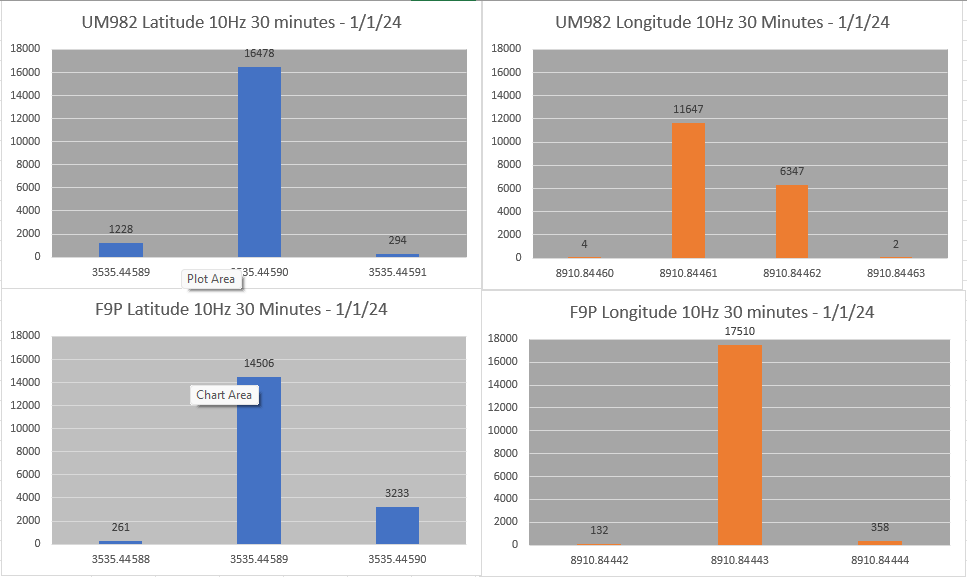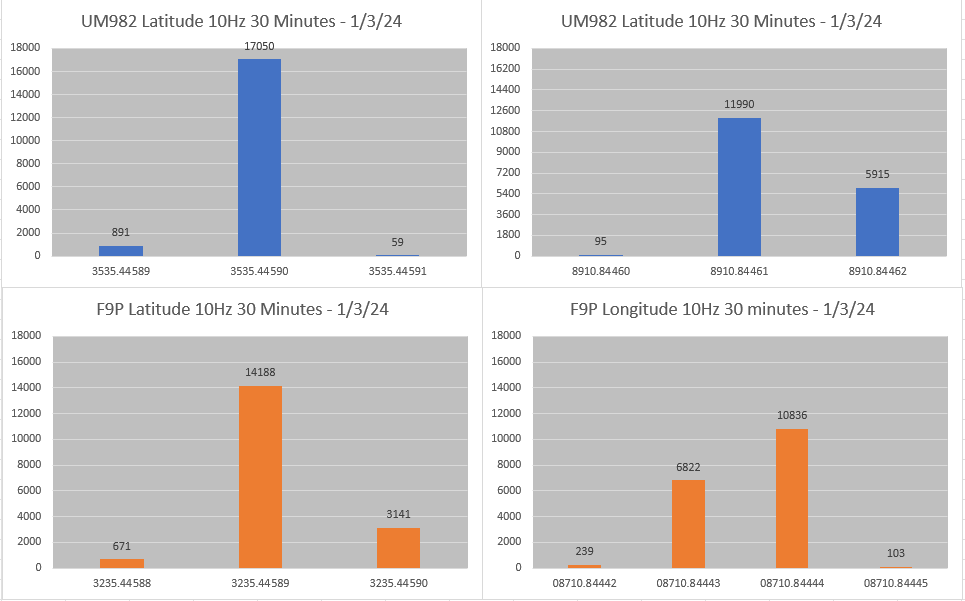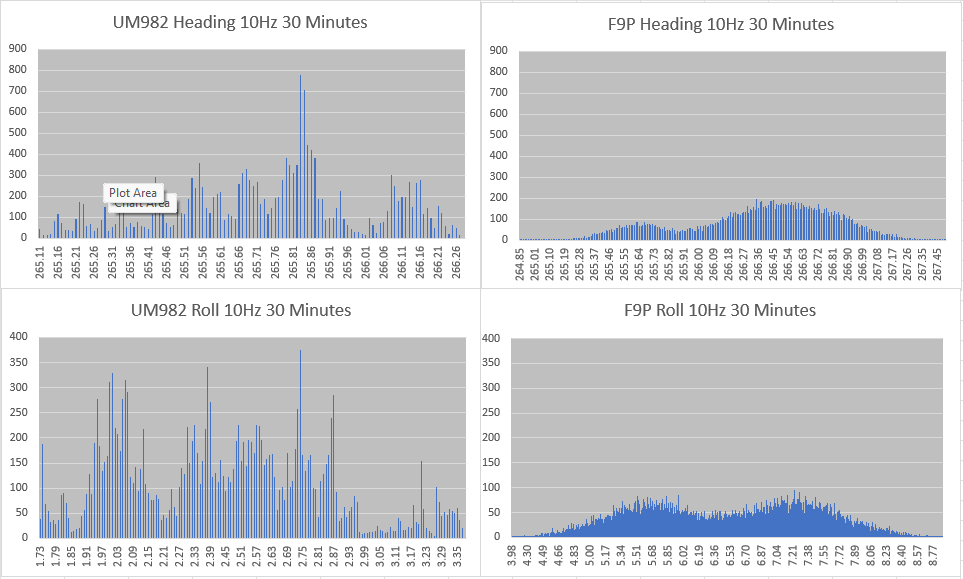F9P / UM982 testing data and results. For my dual setups, I plan on using the UM982’s as they are less than half the price with no practical difference in performance that I could discern.
Setups:
SimpleRTK2B Lite board with the F9P-02B-00 module - Setup in dual configuration as used by the AOG firmware. Firmware version v1.32. Configs; 1.32 DualAntennaHeading_RelPos.txt and 1.32 DualAntennaPosition_GGA%20VTG%20RTCM.txt from the AOG baords repo. Antennas: ANN-MB-00.
UM982 - Setup dual configuration mode. Antenna: Aliexpress 3-band antenna.
The platform was a metal roof of one of my outbuildings. The RTK base station is an F9P based (dual band) on my property about 40 meters from the GNSS test platform. Both systems were run continuously for 30 days before taking the readings. These charts are the raw GGA readings directly from the GNSS receivers. The UM982 LAT / LON readings have been truncated to 5 decimal places to make them the same level of precision as the F9P readings.
** Edited to make the Y-axis the consistent on the graphs, add raw data files, exact model of F9P tested and info on the base station being a dual band F9P.
Someone also asked about roll and heading stability of the UM982. These readings were taken from the AOG firmware PAOGI output. The firmware was in the AOG boards repo. The F9P is closer to the actual roll of the 6 degree test platform. However, the difference in roll for the UM982 can be compensated for in the AOG firmware.
GNSS Data Analysis_F9P_UM982.zip (1.1 MB)


